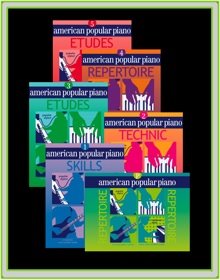The organiser of the 2-day Toronto event was another Music for Young Children (MYC) teacher, Liselotte Jongedijk (www.musicamusicschool.com) who was also the organiser of the entire tour.
The final date in my whirlwind tour of Ontario was Toronto – this had slightly more components in it, so felt like a nice change of pace. On the first morning I did another improvisation session with teachers. Using the same material as in London, I found once again that teachers were very happy to do some off-the-cuff playing if the context made them feel clear about what they were doing and secure in its execution. Quite a few people came up and played in front of everyone else, always impressive! Here’s a picture of this group at work:
Photo 1: Improvisation session in Toronto

The organiser of the 2-dayToronto event was Liselotte Jongedijk (www.musicamusicschool.com) who also was the organiser of the entire tour. Her attention to detail at all times and her deft handling of teachers, other organisers, parents and students (and me!) was a joy to behold. She hopes to organise a similar event in 2010 so watch the website for further news!
After the improvisation workshop, I gave a composition lesson to Edith Covach, a Canadian resident who originally hails from Argentina. She had written a variety of pieces, including a tango and a song in Argentinian style, as well as pieces in more experimental vein, including a 12-tone piece. I found this a really interesting session and I think she was heartened by my comments, which veered towards “come up with a strong idea and base the piece on it, don’t introduce too many disparate elements”
Picture 2: Edith Covach and CN

After the session with Edith, I heard Anika Roberts, a 16 year old student, do her own improvisation on Back on track (a Connections piece) This also proved a very interesting session for us both and it helped her to play the piece really well at the Gala.
Then onto master classes – 2 on Friday afternoon, 5 on Saturday! The standard of playing was really very good and it was quite a task to choose my favourite players. Here’s a montage of the most memorable ones:
Picture 3: students from Toronto

One really special feature of the Toronto event was a family who played piano six hands – from Microjazz Trios – and who proved to be triplets! Here they are:
Picture 4: the triplets play in Toronto

The Gala was on the second night, so we had a good number of students playing and a very appreciative audience. The most striking performance was from a 5 year old student, who played The Young Rider (a Connections piece) with accuracy and real understanding. The audience were amazed! There were also a couple of students who played duets with me – pieces from American Popular Piano Preparatory Level and Level 1 – and these were certainly crowd-pleasers.
This whole Ontario tour was an unalloyed pleasure, for me and I think for the participants. Some final comments from people who attended either master classes or Galas during the tour:
Congratulations! The show was great - you guys sure do run a tight ship.
We thoroughly enjoyed learning from Christopher Norton. What a wonderful musical experience for all the kids. Our son was thrilled with the experience, and really liked playing with Christopher Norton. He is very pleased with himself right now. Thank you so much for creating this opportunity.
This is just a quick note to say thank you very much for all the wonderful work you have done to give us the opportunity to meet and listen to C.Norton. It was a great event. Thanks again.
Thanks so much for the amazing Christopher Norton experience... We all enjoyed it. We heard some beautiful music and it was really interesting.
Thanks so much for all you did to make the event happen. I know our son learned a lot (hope it will stick!) from working under Christopher's direction.

































